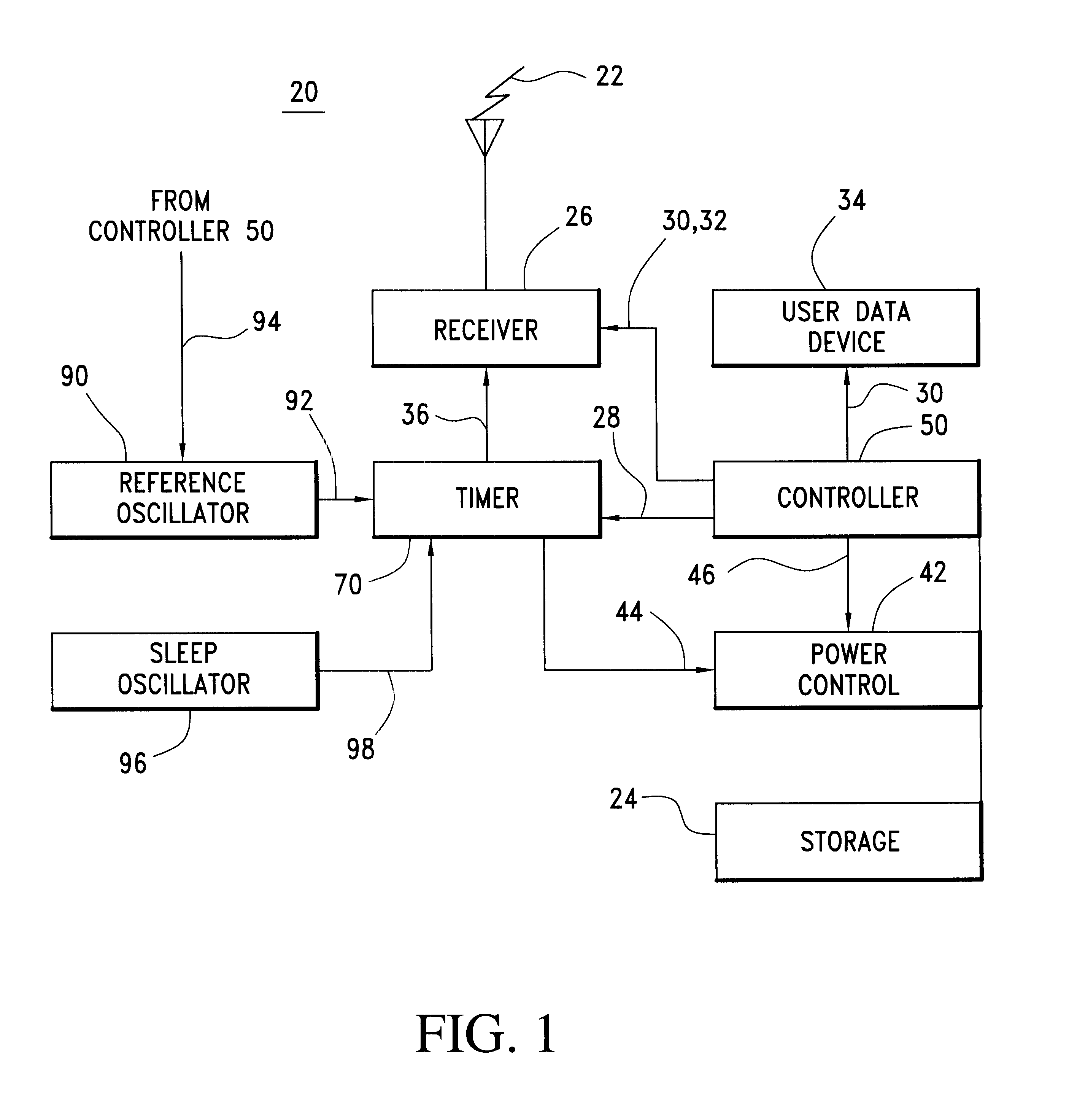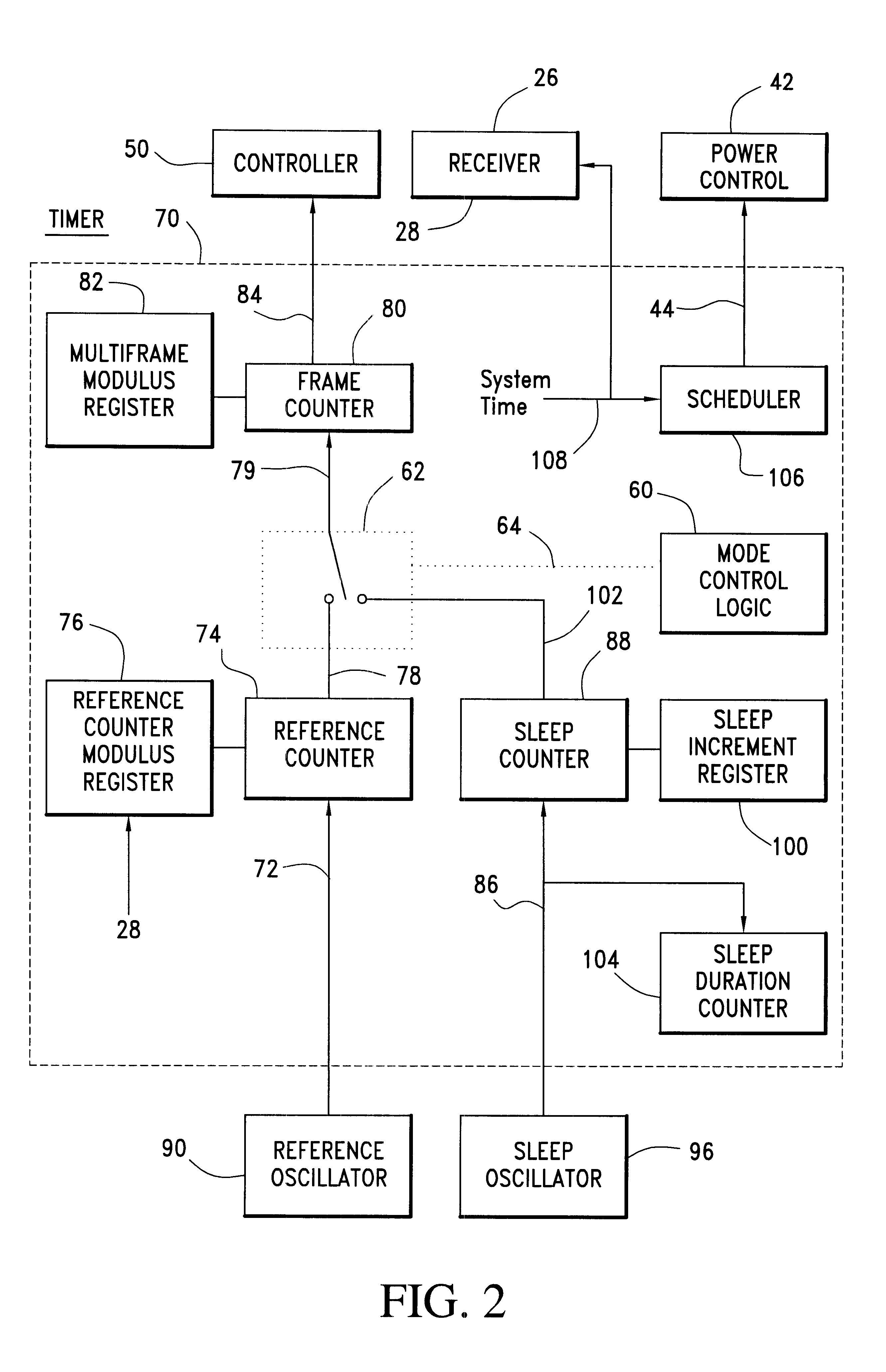Communication device with a self-calibrating sleep timer
a communication device and sleep timer technology, applied in the field of digital communication devices, can solve the problems of large system timer error, poor frequency accuracy or stability, and no mention of attendant drawbacks, and achieve the effect of overcoming the inherent time inaccuracy, accurate maintenance through sleep mode, and low power consumption
- Summary
- Abstract
- Description
- Claims
- Application Information
AI Technical Summary
Benefits of technology
Problems solved by technology
Method used
Image
Examples
Embodiment Construction
FIG. 1 shows a block diagram for a typical embodiment of the invention, a communication device 20 for intermittent message reception. The communication device may be a part of a larger system such as a cellular phone and therefore share other functions such as support of digital voice data for phone calls that are not a part of this disclosure. Radio signals 22 carrying messages intended for the device 20 are intermittently received by a conventional receiver 26. The receiver 26 provides means for frequency down-conversion and demodulation of the messages. The controller 50 is embodied as a software program executed in a microprocessor and supervises operation of the entire communication device 20. The controller provides data processing means for the demodulated data 30 from the receiver 26 such as decoding. A demodulated message 30 may be one of two types, a user message 30 such as a paging message which is directed by the controller 50 to a user device 34, or a control message pr...
PUM
 Login to View More
Login to View More Abstract
Description
Claims
Application Information
 Login to View More
Login to View More - R&D
- Intellectual Property
- Life Sciences
- Materials
- Tech Scout
- Unparalleled Data Quality
- Higher Quality Content
- 60% Fewer Hallucinations
Browse by: Latest US Patents, China's latest patents, Technical Efficacy Thesaurus, Application Domain, Technology Topic, Popular Technical Reports.
© 2025 PatSnap. All rights reserved.Legal|Privacy policy|Modern Slavery Act Transparency Statement|Sitemap|About US| Contact US: help@patsnap.com



